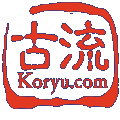Some Thoughts on Learning Koryu in the West
by Diane Skoss
Learning koryu in the West is much more difficult than learning it in Japan. For a number of years now, I've believed that it is, in fact, impossible except under the regular tutelage of an instructor who is deeply familiar with the Japanese culture. In most, but not all, cases, this means having spent a decade or more in Japan.
I've taken quite a lot of flack publicly for this position, but now that I've been back in the United States for over three years and have been responsible for overseeing the instruction of beginners, I believe it even more strongly.
On what do I base this belief? I've been a beginner in modern Japanese arts in both the U.S. and Japan; I've had instructional responsibilities in both classical and modern systems in Japan and here in the West. Now, I'm watching the people I'm training with, observing their struggles and successes and comparing it to my own experiences as a beginner in Japan. The simple fact is that they are having a much tougher time of it than I--and most of the other foreigners I knew in Japan--did.
Technically, the lads are doing just fine for their level (thanks mostly to the work of my own instructor, Phil Relnick, and Meik's depth of experience); what they aren't getting very easily is that nearly indefinable "other stuff" that is so essential to the overall koryu experience.
I've tried over the years to articulate this "other stuff" without much success. Most Western members of a koryu will know instantly what I am referring to, while those who haven't had the whole experience deny that "it" exists. I'm not out to argue with those folks, or to make them feel that their training is somehow wrong--it's just different from being a member of an authentic Japanese tradition. The koryu exist within a specific cultural context--without that context the koryu as a traditional Japanese social group ceases to exist. The body of technique may be perpetuated--more or less intact--for a generation or two outside the context of the ryu, but to my mind it becomes something other than koryu bujutsu.
Since I can't enumerate this "other stuff," perhaps another analogy (to build upon Dave Lowry's splendid "Coconut Palm in Missouri") may help communicate my dis-ease with trying to teach the koryu outside of Japan.
Imagine then that learning the koryu as a beginner in Japan is like having a 5000 piece jigsaw puzzle (it might even be two-sided, depending on the ryu). Not only do you have the box cover with the puzzle's finished picture on it, you've also got the guidance of your instructor, who can focus your attention on specific areas and approaches, and may even occasionally hand you a piece. Over the years, you can fit together the technical body of the ryu with its social milieu to complete the puzzle.
Outside Japan you are learning the koryu without the box top. An instructor may be able to help you build the tree that represents the technical portion, but you are missing the bigger picture that is the Japanese culture. While you certainly can eventually assemble the entire puzzle, it will take a lot longer to do so.
Another way of looking at this is to think of the koryu as existing in a matrix of connections and nexuses like old-fashioned wooden Tinker Toys. In the dojo, the instructor helps you to construct one portion of the matrix, primarily the techniques and social customs specific to the ryuha. The rest of the matrix is vital for full understanding, but that's not a problem since it is the one in which you are leading your everyday life. As a foreigner in Japan, one is constantly tripping over something in a totally unrelated arena that suddenly reveals itself to have an important role in the koryu. For those of us who learned the koryu in Japan it was merely a process of discovering the connections and nexuses.
For the students I'm working with here in the U.S., I'm finding that their job (and mine) is much larger. While the process of discovery of the specific techniques and traditions of the ryu for my students is much as the same as it was for me in Japan, the rest of the matrix simply doesn't exist for them. Once outside the dojo, they are in an entirely foreign culture. They must actively seek to construct the pieces of the matrix themselves, then figure out how they go together, all based on secondary sources. In certain instances I can help by constructing and attaching a piece or two, but the traditional teachings of a ryu rarely covers much of this "other stuff" explicitly, and the onus is on the student (whether here or in Japan) to puzzle things out.
In the end, I think it is vital for the beginning student in the West to understand how difficult their task will be. They have to learn to step out of their own country and into Japan when they enter the dojo. They have to learn to set aside national tendencies and rights (around here these are often instant gratification and inherent equality of status) and to subject themselves to what at first can seem to be an incomprehensible and arbitrary array of behavioral rules.
Finally, keep in mind that there are many trails to follow; all have their merits and limitations. Just be aware of the true nature of your path and its obstacles.

Contact Koryu.com
Last modified on December 27, 2017
URL: https://koryu.com /library/dskoss7.html
Copyright ©2022 Koryu Books. All rights reserved.
